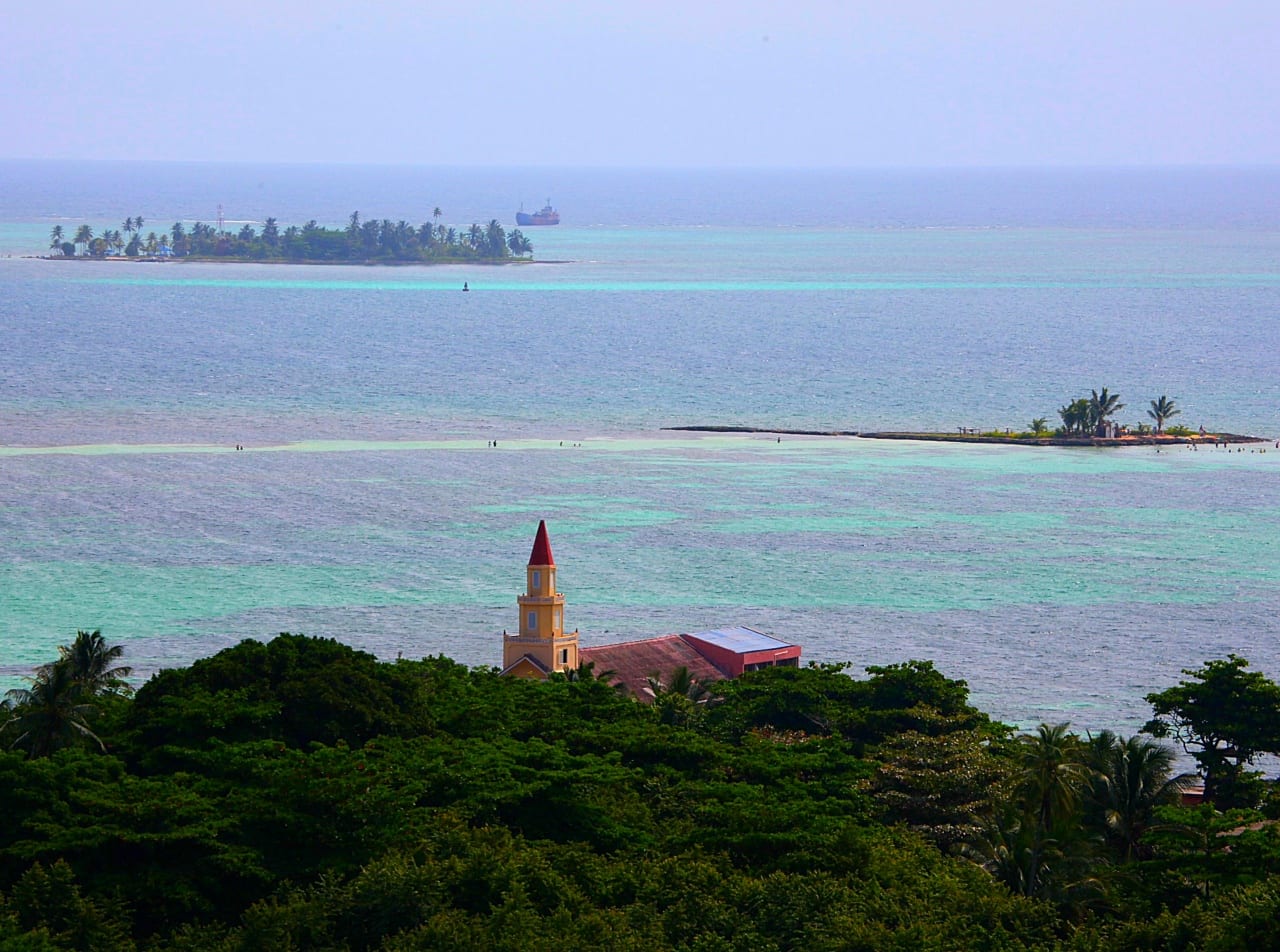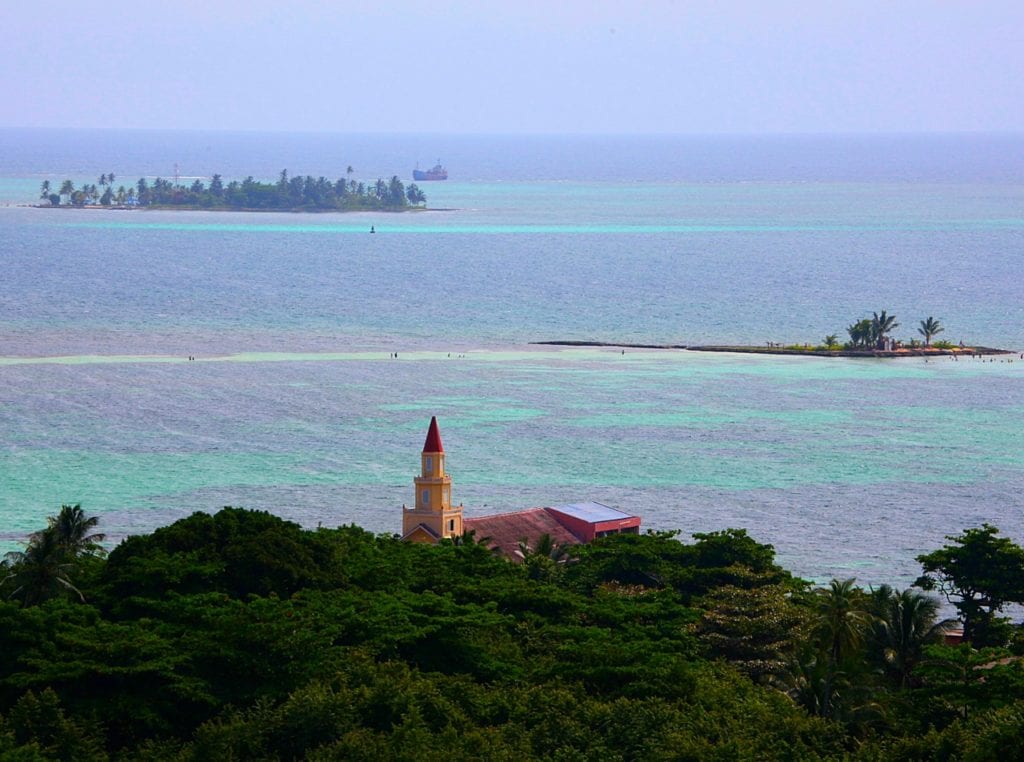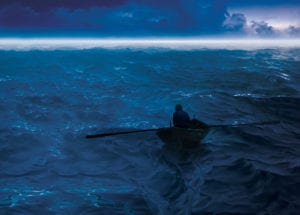Three months ago A Sea Change was in
Colombia for a series of screenings in the cities of Bogotá, Medellín
and Cartagena de Indias. We did numerous television, radio and
newspaper interviews and maybe due to all that media coverage of Ocean
Acidification and the film we were invited to the only two environmental
film festivals in the country. The first one is called the Seaflower Film
Festival, http://www.seaflower-festival.org/index.html, which is taking place these days on the tropical archipelago of San Andrés,
close to the Nicaraguan coast.

The main island, San Andrés, owes its
existence to deep volcanic and seismic activity that lifted and shifted
sideways above water the preexisting coral reefs and gave form to the
present small seahorse contoured island.

It has a gently sloping
eastern coast protected by world class coral reefs and a sharper and
more elevated western side that faces exposed, deep waters. Although
locals are are in disbelief of all the tourists that descend upon this free port in search of paradise I am finding what’s above water pretty
innocuous and lacking character when not downright ugly, overdeveloped
or crumbling. But this negative perception instantly vanishes once I
put some scuba gear on and venture into the sea: The kaleidoscope of
corals, fish and crustaceans I am encountering is so dense, harmonious,
so colorful it resembles a giant aquarium tank in which the great opera
of underwater life is being staged. The moments in our lives when we
face perfect beauty and harmony are rare to the extent they usually look
artificial, made up, like a dream. And to some extent that is how I
feel, watching those parrotfish munching on coral, the towers, spheres,
carpets and spirals of polyp colonies that provide sanctuary for
everything from shrimp, baby fish, lobsters, shy octopi and worms, the
sandy banks peppered with hiding soles, stony conches and resting sting
rays, that solitary barracuda that circles around something I can’t see,
the juvenile turtle that disappears ahead and I will never see again…
it all leaves me in awe, ecstatic, but I am also overcome with the
terrible burden of knowing the dramatic future ahead. I am here
attending one of the great diva’s last performances.
On the
first day of the festival local professor Francisco Avella gave a brief
but poignant speech on coastal communities. He made an interesting
distinction between those that live by the sea and the ones that live
from it. The ones that need the sea use its resources, are cautious and
observing, always aware of their dependence on the ocean for their
survival. Quite accordingly, we then went on to watch a sweet
Independent documentary titled Free Swim, http://www.freeswimmovie.com/ about
the island of Eleuthera, on the Bahamas, where more than half the
population cannot swim and lives with its back turned against the
fearful water that can drown you, but that paradoxically attracts all
their revenue. I will not reveal more in case you want to go to their
website and watch it.As I type now we are screening A Sea Change at the festival. I will write about how things went on the next post.


